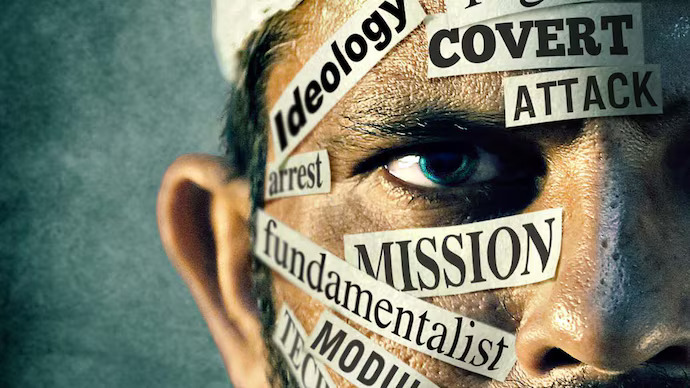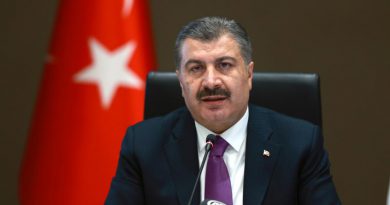SIMI Beyond the Ban: The Untold Story of India’s Islamist Student Movement
The narrative of SIMI as an omnipresent, monolithic underground force is, according to insiders, a distortion.
For the first time in years, voices from inside the Students Islamic Movement of India (SIMI) have broken their silence. Four former members, once part of the group’s underground network after its ban in 2001, agreed to recount their experiences and reflections.
Now middle-aged, between 40 and 60, they carry no criminal cases but spoke only under strict anonymity. Their testimonies—guarded, personal, and often sobering—form the backbone of this account.
Origins and Evolution of SIMI
Founded in 1977 as the student wing of Jamaat-e-Islami Hind, SIMI initially functioned as a platform for religious education and reformist activism amongst the students primarily through campus based activities. Its early years were marked by vigorous debates over Muslim identity and the preservation of religion.
According to its Constitution, SIMI aimed to achieve Allah’s pleasure through reconstruction of human life in accordance with the principle given by Allah and His messenger.
The Holy Qur’an and Sunnah would guide the organization in all matters. However, by the 1990s—particularly following the demolition of the Babri Masjid in 1992, SIMI shifted its focus from traditional student activism to combatting communal violence, discrimination, and the perceived marginalization of Indian Muslims.
After formally severing ties with Jamaat-e-Islami Hind, SIMI charted an independent course. Throughout the latter half of the 1990s, internal debates intensified regarding the organisation’s tactical and strategic direction in an increasingly hostile sociopolitical environment.
Factional Divides and Tactical Debates
By late 90’s, two distinct factions had emerged within SIMI’s leadership. The then-president advocated avoiding direct confrontation with the state, fearing that such actions would invite repression and eliminate the limited space for public activism.
In contrast, Safdar Nagori pushed for more assertive tactics, rejecting suicide bombings and indiscriminate violence but endorsing targeted killings as a means to force political change and instill fear among perceived enemies.
Nagori’s stance was less about moral opposition to mass attacks and more grounded in political calculation. He argued that suicide bombings would provoke a crackdown, lead to mass arrests, dismantle the organisation, and damage the broader Muslim community’s image.
The president’s faction viewed Nagori’s approach as reckless, while Nagori’s supporters considered the president’s position too conciliatory and ineffective.
This schism created ideological fragmentation. Some members departed to establish smaller, more militant groups. Others, who had joined SIMI out of religious affinity rather than political conviction, became inactive, feeling alienated amid escalating internal debates.
Shahid Badar Falahi, who was the president of SIMI at the time of its ban, was arrested and incarcerated for three years following the ban. During his imprisonment, his views on the organisation, Islamic activism and tactics to bring about an Islamic caliphate underwent a significant transformation.
In his absence, Safdar Nagori assumed the presidency and made decisions that diverged considerably from Falahi’s approach. Upon Falahi’s release, he openly rejected and dissented from the policies implemented under Nagori’s leadership. This ideological and strategic disagreement culminated in a formal split within SIMI in the following the release of Falahi, marking a definitive fracture in the organization’s unity.
Membership Profile and Organisational Structure
Contrary to popular stereotypes portraying Islamic organizations as havens for the uneducated or disenfranchised, SIMI’s membership in the 1990s was highly educated: approximately 90% held bachelor’s degrees, a stark contrast to less than 4.4% of Indian Muslims with such qualifications today. The organization maintained a strict age limit of 30 for active members, meaning those involved before the 2001 ban are now between 40 and 60 years old.
SIMI’s structure was tiered. The core ideological cadre, known as the “Ansar”, underwent rigorous training and guided the organisation’s direction. Most of the individuals arrested in terror cases of SIMI are from this group.
Outside this inner circle was the broader base of general members, called “Ikhwan”, who participated in activities but often lacked deep ideological grounding and were primarily involved in its work for religious reasons.
State Surveillance and Infiltration
Members acknowledged widespread suspicion and firm belief, that Indian intelligence agencies had deeply infiltrated both SIMI’s underground and overground networks, even prior to the official ban in 2001.
The Intelligence Bureau reportedly possessed concrete evidence and detailed knowledge of SIMI’s covert activities. Authorities were aware of how SIMI had reorganized itself, creating and penetrating various organizations to continue its operations despite legal prohibitions.
Disentangling SIMI and Indian Mujahideen
A persistent allegation links SIMI directly to Indian Mujahideen attacks. However, those familiar with SIMI’s internal workings reject this claim outright.
Although SIMI extensively debated the concept of Jihad during the 1990s, equating these ideological discussions with the operational tactics of Indian Mujahideen is misleading. Many spontaneous violent acts by frustrated Muslim youth bore no organizational link to SIMI, yet were often portrayed as part of a grand conspiracy implicating the group.
Comparative Context: SIMI and Lashkar-e-Taiba
While Lashkar-e-Taiba in Pakistan actively engaged in Jihad, while espousing Dawah — the Islamic call towards faith, SIMI’s pattern was the opposite. Jihad was a frequent topic within SIMI’s discourse, but the organization largely confined its practical activities to dawah efforts such as religious outreach, education, and mobilization.
This perspective was widely shared within SIMI’s inner circle and often repeated, becoming a defining narrative among members. The contrast underscores a significant gap between SIMI’s rhetoric and its operational reality.
The brother of a former All-India SIMI leader described the organisation as “treacherous,” arguing it exploited fundamental democratic rights, such as freedom of speech and expression, that guaranteed its own existence, to undermine those very freedoms.
According to him, SIMI’s attempts to sabotage democratic institutions justified the subsequent repression. He emphasized that no movement can legitimately betray the constitutional liberties that enable its operation.
Membership Motivations and the Radicalization Narrative
For many members, continued association with SIMI in the 1990s was less about ideological rigidity and more about a shared sense of Muslim solidarity amid an increasingly perceived hostile environment. Some departed because they found the organization’s approach insufficiently forceful or disagreed with any move towards armed struggle and many other reasons.
The narrative of SIMI as an omnipresent, monolithic underground force is, according to insiders, a distortion. While the organization possessed committed members and a strong ideological core, it was far from the all-encompassing threat often portrayed.
In their view, the primary drivers of radicalization among Muslim youth were not SIMI’s directives but material conditions and personal ideological convictions. But a lot of SIMI members were radicalized not due to material condition but by the sheer privilege of being able to read and educate oneself about Islam.
Disclaimer: Views expressed by writers in this section are their own and do not reflect Milli Chronicle’s point-of-view.



